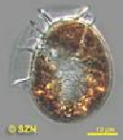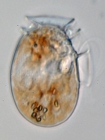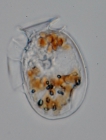RAS taxon details
Dinophysis ovum T.H.Abé, 1967
marine, fresh, terrestrial
Not documented
Guiry, M.D. & Guiry, G.M. (2025). AlgaeBase. World-wide electronic publication, National University of Ireland, Galway (taxonomic information republished from AlgaeBase with permission of M.D. Guiry). Dinophysis ovum T.H.Abé, 1967. Accessed through: RAS (Eds.) (2025) Register of Antarctic Species at: https://ras.biodiversity.aq/aphia.php?p=taxdetails&id=646201 on 2025-09-12
RAS (Eds.) (2025). Register of Antarctic Species. Dinophysis ovum T.H.Abé, 1967. Accessed at: https://ras.biodiversity.aq/aphia.php/www.pfeil-verlag.de/04biol/www.pfeil-verlag.de/04biol/aphia.php?p=taxdetails&id=646201 on 2025-09-12
Date
action
by
2012-09-04 13:39:36Z
created
db_admin
2012-10-23 08:50:40Z
changed
db_admin
context source (HKRMS)
Lam CWY. & Ho KC. (1988). Phytoplankton characteristics of Tolo Harbour. In: Morton B, editor. Asian Marine Biology 6. pp 5-18. Hong Kong University Press, Hong Kong. [details]
context source (RAS) Australian Antarctic Data Centre. , available online at https://data.aad.gov.au/aadc/biodiversity/ [details]
context source (Bermuda) Hulburt, E. M.; Ryther, J. H.; Guillard, R. R. L. (1960). The phytoplankton of the Sargasso Sea off Bermuda Also In: The Plankton Ecology and Related Chemistry and Hydrography of the Sargasso Sea Progress Report: Sep. 1957 - Apr. 1959 AEC Contract No. AT(30-1)-2078. Journal du Conseil International pour l’Exploration de la Mer, 15: 115-128 [details]
basis of record Guiry, M.D. & Guiry, G.M. (2025). AlgaeBase. <em>World-wide electronic publication, National University of Ireland, Galway.</em> searched on YYYY-MM-DD., available online at http://www.algaebase.org [details]
additional source Abé, T.H. (1967). The armoured Dinoflagellata: II. Prorocentridae and Dinophysidae (B) - <i>Dinophysis</i> and its allied genera. <em>Publications of the Seto Marine Biological Laboratory.</em> 2: 37-78. [details] Available for editors
additional source Moestrup, Ø., Akselman, R., Cronberg, G., Elbraechter, M., Fraga, S., Halim, Y., Hansen, G., Hoppenrath, M., Larsen, J., Lundholm, N., Nguyen, L. N., Zingone, A. (Eds) (2009 onwards). IOC-UNESCO Taxonomic Reference List of Harmful Micro Algae., available online at http://www.marinespecies.org/HAB [details]
ecology source Harred, L. B.; Campbell, L. (2014). Predicting harmful algal blooms: a case study with Dinophysis ovum in the Gulf of Mexico. <em>Journal of Plankton Research.</em> 36(6): 1434-1445., available online at https://doi.org/10.1093/plankt/fbu070 [details]
ecology source Mitra, A.; Caron, D. A.; Faure, E.; Flynn, K. J.; Leles, S. G.; Hansen, P. J.; McManus, G. B.; Not, F.; Do Rosario Gomes, H.; Santoferrara, L. F.; Stoecker, D. K.; Tillmann, U. (2023). The Mixoplankton Database (MDB): Diversity of photo‐phago‐trophic plankton in form, function, and distribution across the global ocean. <em>Journal of Eukaryotic Microbiology.</em> 70(4)., available online at https://doi.org/10.1111/jeu.12972 [details]
ecology source Mafra Jr., L. L.; Nagai, S.; Uchida, H.; Tavares, C. P.; Escobar, B. P.; Suzuki, T. (2016). Harmful effects of Dinophysis to the ciliate Mesodinium rubrum: Implications for prey capture. <em>Harmful Algae.</em> 59: 82-90., available online at https://doi.org/10.1016/j.hal.2016.09.009 [details]
context source (RAS) Australian Antarctic Data Centre. , available online at https://data.aad.gov.au/aadc/biodiversity/ [details]
context source (Bermuda) Hulburt, E. M.; Ryther, J. H.; Guillard, R. R. L. (1960). The phytoplankton of the Sargasso Sea off Bermuda Also In: The Plankton Ecology and Related Chemistry and Hydrography of the Sargasso Sea Progress Report: Sep. 1957 - Apr. 1959 AEC Contract No. AT(30-1)-2078. Journal du Conseil International pour l’Exploration de la Mer, 15: 115-128 [details]
basis of record Guiry, M.D. & Guiry, G.M. (2025). AlgaeBase. <em>World-wide electronic publication, National University of Ireland, Galway.</em> searched on YYYY-MM-DD., available online at http://www.algaebase.org [details]
additional source Abé, T.H. (1967). The armoured Dinoflagellata: II. Prorocentridae and Dinophysidae (B) - <i>Dinophysis</i> and its allied genera. <em>Publications of the Seto Marine Biological Laboratory.</em> 2: 37-78. [details] Available for editors
additional source Moestrup, Ø., Akselman, R., Cronberg, G., Elbraechter, M., Fraga, S., Halim, Y., Hansen, G., Hoppenrath, M., Larsen, J., Lundholm, N., Nguyen, L. N., Zingone, A. (Eds) (2009 onwards). IOC-UNESCO Taxonomic Reference List of Harmful Micro Algae., available online at http://www.marinespecies.org/HAB [details]
ecology source Harred, L. B.; Campbell, L. (2014). Predicting harmful algal blooms: a case study with Dinophysis ovum in the Gulf of Mexico. <em>Journal of Plankton Research.</em> 36(6): 1434-1445., available online at https://doi.org/10.1093/plankt/fbu070 [details]
ecology source Mitra, A.; Caron, D. A.; Faure, E.; Flynn, K. J.; Leles, S. G.; Hansen, P. J.; McManus, G. B.; Not, F.; Do Rosario Gomes, H.; Santoferrara, L. F.; Stoecker, D. K.; Tillmann, U. (2023). The Mixoplankton Database (MDB): Diversity of photo‐phago‐trophic plankton in form, function, and distribution across the global ocean. <em>Journal of Eukaryotic Microbiology.</em> 70(4)., available online at https://doi.org/10.1111/jeu.12972 [details]
ecology source Mafra Jr., L. L.; Nagai, S.; Uchida, H.; Tavares, C. P.; Escobar, B. P.; Suzuki, T. (2016). Harmful effects of Dinophysis to the ciliate Mesodinium rubrum: Implications for prey capture. <em>Harmful Algae.</em> 59: 82-90., available online at https://doi.org/10.1016/j.hal.2016.09.009 [details]
 Present
Present  Inaccurate
Inaccurate  Introduced: alien
Introduced: alien  Containing type locality
Containing type locality



